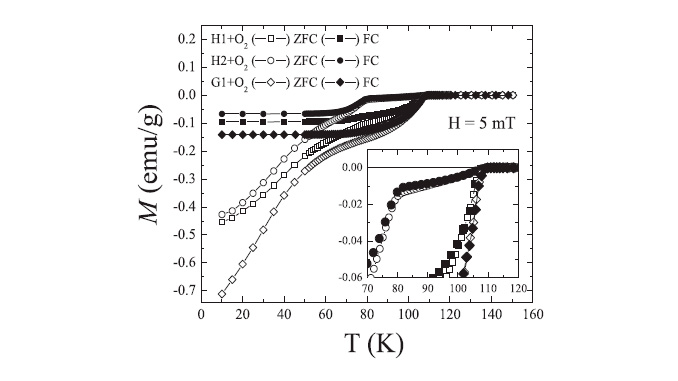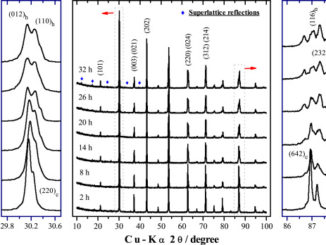
Writers: F. Rosales-Saiz and L. Pérez-Acosta and I.F. Machado and J.E. Pérez-Fernández and R.F. Jardim and E. Govea-Alcaide
Keywords: Bi-based superconductor; Spark plasma sintering; Finite element method; Superconducting properties
Abstract: The influence of different plungers/die materials for the synthesis of (Bi, Pb)2Sr2Ca2Cu3O10+δ (Bi-2223) superconductors via the spark plasma sintering SPS method and by using two different setups made of all-graphite and all-steel were investigated. AISI H13 die steel, which is widely used as a hot forging die, was chosen to verify the methodology. In the all-steel setup, samples were consolidated at 700 and 750 °C, for 5 min, and subjected to two different heating rates of 135 and 50 °C/min. Moreover, by using the all-graphite setup, a sample was consolidated at 750 °C, for 5 min by using a heating rate of 145 °C/min. Irrespective of the type of plungers/die materials used, the X-ray diffraction analysis indicate the occurrence of an extra phase Bi2Sr2CaCu2O8+δ (Bi-2212) in all samples and its volume fraction was estimated to be comprehended between ∼3% and 60%. In samples consolidated with the all-steel setup at 750 °C, for 5 min, and a heating rate of 50 °C/min, the volume fraction of the Bi-2212 phase was found to be as high as 60%. Computational simulations, by using the Finite Element Method (FEM) with an integrated PID control, were performed to evaluate the temperature profile within samples during the SPS consolidation. The model was then validated by comparing its predictions with experimental results, showing good agreement. From the temperature dependence of magnetization M(T), performed in powder and pellet samples, we have inferred that superconductivity arises from grains with core-shell morphology, where the shell is oxygen deficient. The influence of carbon contamination as the mechanism responsible for the oxygen deficiency in SPS samples has been considered and refuted by the current data. No evidence of the role played by the carbon contamination or reduction in promoting the formation of grains with core-shell morphology has been found. We also argue that the consolidation process, conducted under vacuum, is responsible for the origin of an oxygen deficiency shell near grain boundaries in Bi-2223 samples.




